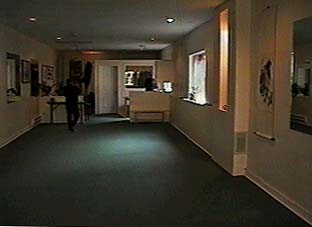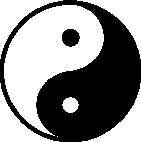|
|
About TEK |
|
Tek was born in Shanghai, China in 1947. When he was 8, he emigrated along with his family to Singapore, then later to Kuala Lumpur. At age 13 he started learning Tai Chi with Mr. Tung, a principle disciple of Master Wu Tu Nan, and at the same time Chi Kung Eight Brocades with Mr. Cheng. At age 17, Tek learned Hung Ga (South Shaolin Style) from Master Sung, Tan Tui (North Kicking Style) from Master Yip, Phoenix Fist from Sifu Soo. He also studied Thai Boxing, Punjat Silat, Taekwando and Aikido. Tek was also a student of the Venerable Paid Wan in Zen meditation. |
|
|
1979: Tek taught Tai Chi in New York City, where many of his students were dancers, musicians, writers, painters and professionals of other artistic disciplines. 1980: After teaching Tai Chi in Geneva and Lausanne, Tek visited Paris. He spent a great deal of his time visiting galleries, museums and palaces with the intent to incorporate the inner meaning of the Western paintings and sculptures into the domain of Eastern philosophies. 1982: Tek returned to Toronto and went into retreat in order to achieve a breakthrough in his martial arts quest. 1985: Tek traveled to China to search for his martial arts roots. He was amazed by the wealth and abundance of the Chinese culture and arts, yet felt deep sorrow at the same time for the present generation who was not able to treasure and maintain this heritage. Tek's concern prompted him to attempt to preserve the legacy by bringing back a portrait of the sage of Cold Mountain from Cold Mountain Temple in Szuchow. This portrait now hangs in the Toronto Cold Mountain Dojo. 1986: Tek resumed teaching Yang Style Tai Chi and Lok Hup in Toronto. 1987: Tek studied Hsin-I Standing Meditation with Mr. Chong and incorporated the martial arts stance into the Zen meditation. In the same year, along with a fellow group of teachers and practitioners, Tek founded the Canadian Taijiquan Federation. 1989: While traveling to Central Java, Tek paid tribute to the immense Buddhist sculptures and wall carvings in Borobudor. These early Buddhist displays inspired him to contemplate for his path in life. Visiting Bali Island, Tek ascended to the peak of the volcano and meditated at the temple by the placid volcano lake. Descending to the deserted beach by the ocean, he practiced the Wu Chi standing meditation by facing the pounding, thundering waves. He searched for the meaning of life through these two extremes in nature. 1992: As president of the Canadian Taijiquan Federation, Tek established the rules and judging standards of the Tai Chi form competitions. 1996: Tek moved to the West Coast and started teaching in Victoria. Since then, Tek has been teaching Tai Chi and Chi Kung at his Tai Chi with Tek centre in Victoria B.C. Canada. |
|

Tai Chi with Tek Centre, Victoria BC
|
1999: Tek moved his Studio from Gordon St to Dallas Rd. The group practises in front of the snow-capped Mount Olympia across the ocean of Juan de Fuca, keeping company with the gliding gulls in the sky and diving whales in the water. 2000: Tek and his fellow students incorporate the Hsin-I Tai Chi Institute in order to carry out the vision of enabling students to be role models for national and world citizenship. 2001: Tek marked a significant milestone on his philosophical journey: he moved back to the Far East to live and teach in Singapore where the cultures of east and west meet and mingle. |
